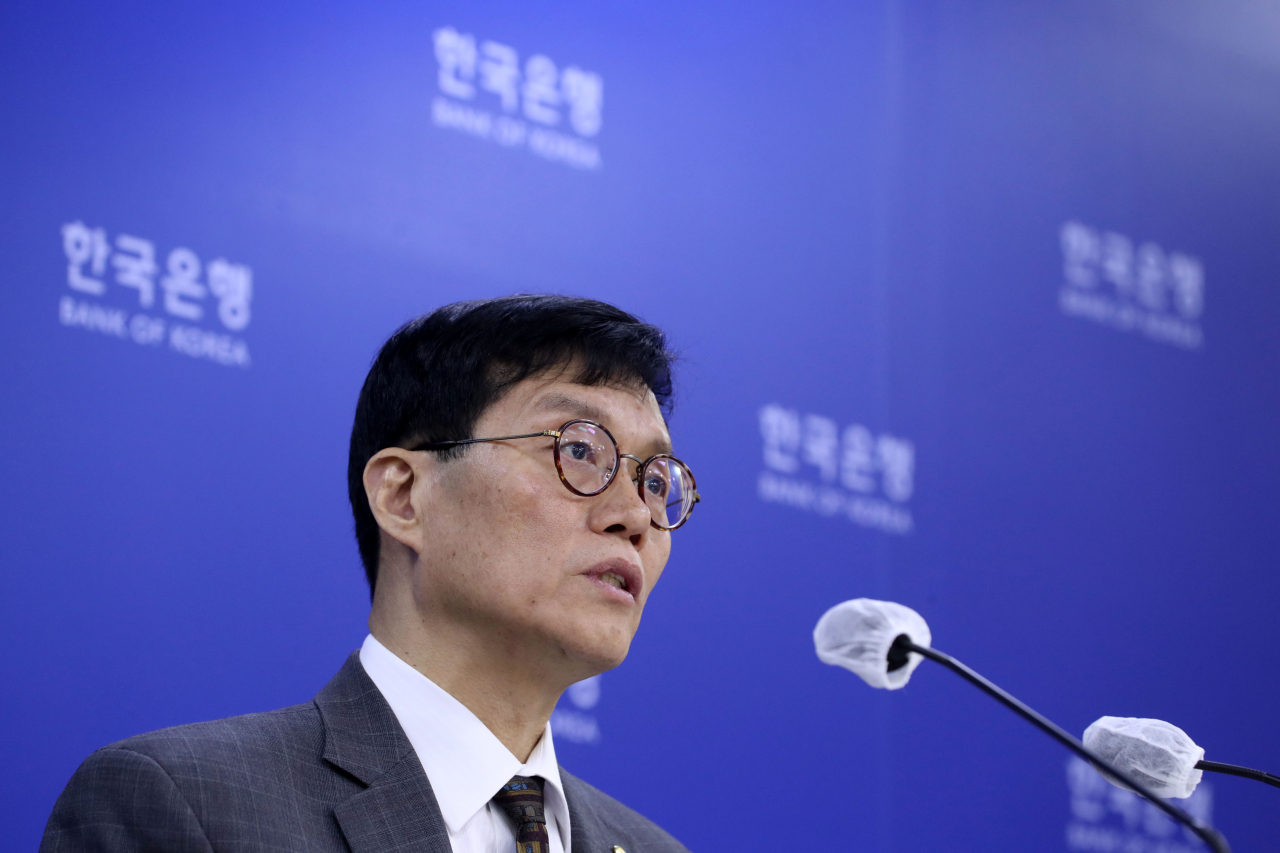BOK freezes rate once again
Korea's rate freeze to further widen gap with US
By Im Eun-byelPublished : April 11, 2023 - 14:47

The Bank of Korea kept the base rate unchanged for a second consecutive time, as inflation appears to be somewhat on the wane while the economy remains slow.
The central bank decided to hold the rate at 3.5 percent at its rate-setting meeting on Tuesday, matching market expectations that the BOK's rate hike cycle of 1 1/2 years has come to a halt.
“Inflation is projected to continue slowing down although it will remain above the target level for a considerable time. Uncertainties surrounding the policy decision are also judged to be high with increasing risks to the financial sectors in major countries,” BOK Gov. Rhee Chang-yong said at a press briefing Tuesday.
“It is appropriate to judge whether the base rate needs to rise further while assessing the pace of inflation slowdown, financial stability conditions and developments in other uncertainties,” Rhee said, adding all six members of the monetary policy board agreed to maintain the current rate.
As Rhee said, recent figures show that inflation has passed its peak in Korea. The consumer price index for March showed prices have increased by 4.2 percent on-year. That marks the lowest increase since 4.1 percent recorded in March 2022.
Though the inflation rate still surpasses the 2 percent target set by the central bank, the figures so far fit the BOK’s projection, in which it assessed the inflation rate would drop below 4.5 percent in March and descend to the low 3 percent range by the end of this year.
Yet, the core inflation index, excluding volatile food and energy prices, remains high, standing at 4 percent in March, same as that a month earlier. The BOK assessed inflation in service prices is yet to fall.
“Inflation is likely to slow down in the first half of this year,” Rhee said. “For the latter half of the year, uncertainties are high with the oil production cut from OPEC+, as oil prices will lead to changes in food prices and more.”
As the US Federal Reserve has taken a step back in its rate hikes, the BOK was relieved of the pressure to follow with further hikes. The Fed went for a hike of 25 basis points last month following a recent string of bank crises with the Silicon Valley Bank and Credit Suisse collapses.
Yet, the gap between the key rates of Korea and the US stands at 1.5 percentage points, a high not seen since 2000.

If the US Federal Reserve raises the rate by 25 basis points in early May as expected, the gap will widen to an unprecedented figure of 1.75 percentage points.
Though the widened gap is being met with concerns about an outflow of foreign funds and volatility in the currency exchange market, Rhee assured that the market will remain stable despite the difference.
“The exchange rate itself is not the goal (for the BOK),” Rhee said. “The exchange rate is one of the cost variables (in the economy). For the state, it is more about controlling uncertainties and preventing a financial crisis.”
While going for a second consecutive rate freeze, the BOK continued to push back on the market’s dovish expectations for an early pivot in its monetary policy.
“It is inappropriate to discuss a rate fall until the consumer price index drops below the low 3 percent range,” Rhee said.
Maintaining a hawkish stance, five of the six board members viewed that Korea’s terminal rate could go up to 3.75 percent in the near future, following volatility in the financial market from the oil production cut and bank collapses, Rhee added. One other member called for the rate to stand at 3.5 percent.
The next BOK rate-setting meeting is slated to take place on May 25, following the US Federal Reserve’s Federal Open Market Committee meeting, set to be held May 2-3.








![[New faces of Assembly] Architect behind ‘audacious initiative’ believes in denuclearized North Korea](http://res.heraldm.com/phpwas/restmb_idxmake.php?idx=644&simg=/content/image/2024/05/01/20240501050627_0.jpg&u=20240502093000)










